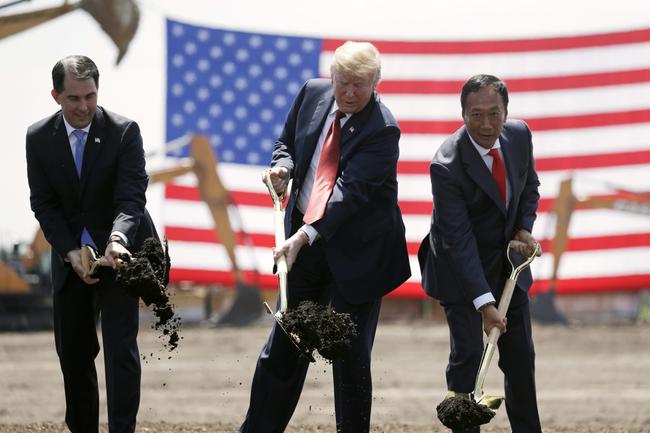Back in the summer of 2017, to much fanfare President Donald Trump announced that Taiwanese electronics giant Foxconn, best known for making the iPhone, would build a new plant producing LCD panels in Wisconsin that will bring thousands of jobs to the state.
On the surface it was great deal: in what’s being called the “largest economic development project in state history”, Foxconn said it would build a $10 billion plant that will eventually employ as many as 13,000 people, according to the White House and Gov. Scott Walker. To be sure, it was a quid pro quo: to help lure the manufacturer, the state pledged $3 billion in tax and other “performance-based” incentives and local authorities added $764 million. Foxconn must meet hiring, wage and investment targets by various dates to receive most of those benefits.

And while many – including this site – accused the project of being a giant taxpayer-funded boondoggle, calculating that every job created would cost some $230,000 in incentives, a little over a year later and even more disturbing “glitch” in the plan has emerged: according to the WSJ, instead of hiring local talent, Foxconn is considering bringing in personnel from China “to help staff the large facility under construction in southern Wisconsin as it struggles to find engineers and other workers in one of the tightest labor markets in the U.S.”
According to the report, the company has been quietly trying to tap Chinese engineers through internal transfers to supplement staffing for the Wisconsin plant.
And while Foxconn did promise that it would invest $10 billion to build a 22-million-square-foot liquid-crystal display panel plant, hiring 13,000 employees – primarily factory workers along with some engineers and business support positions – it apparently never specified if the workers hired would be American… or Chinese.
Responding to WSJ questions about its hiring plans, the company said its “Wisconsin first commitment remains unchanged,” adding that it still plans to ultimately hire 13,000, and the majority “will work on high-value production and engineering assignments and in the research and development field.”













Leave A Comment